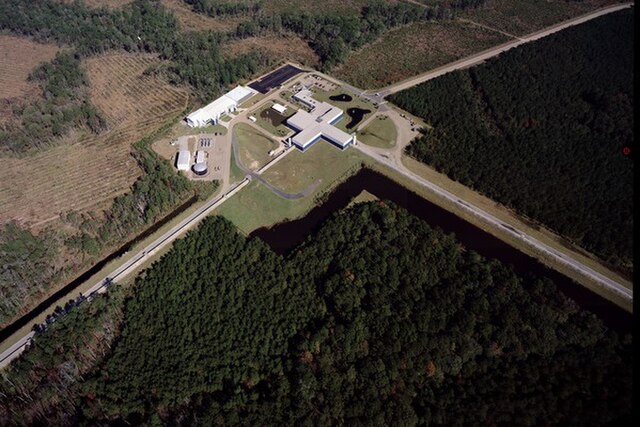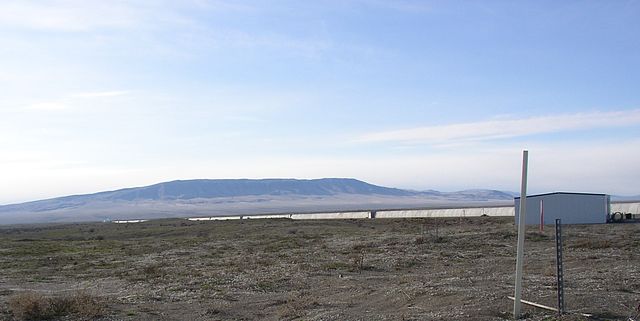The Laser Interferometer Gravitational-Wave Observatory (LIGO) is a large-scale physics experiment and observatory designed to detect cosmic gravitational waves and to develop gravitational-wave observations as an astronomical tool. Two large observatories were built in the United States with the aim of detecting gravitational waves by laser interferometry. These observatories use mirrors spaced four kilometers apart which are capable of detecting a change of less than one ten-thousandth the charge diameter of a proton.
The LIGO Livingston control room as it was during Advanced LIGO's first observing run (O1)
LIGO Hanford Observatory
LIGO Livingston Observatory
Western leg of LIGO interferometer on Hanford Reservation
Gravitational waves are waves of the intensity of gravity that are generated by the accelerated masses of binary stars and other motions of gravitating masses, and propagate as waves outward from their source at the speed of light. They were first proposed by Oliver Heaviside in 1893 and then later by Henri Poincaré in 1905 as the gravitational equivalent of electromagnetic waves. Gravitational waves are sometimes called gravity waves, but gravity waves typically refer to displacement waves in fluids.
In 1916 Albert Einstein demonstrated that gravitational waves result from his general theory of relativity as ripples in spacetime.
The gravitational wave spectrum with sources and detectors. Credit: NASA Goddard Space Flight Center
Artist's impression of merging neutron stars, a source of gravitational waves
Now disproved evidence allegedly showing gravitational waves in the infant universe was found by the BICEP2 radio telescope. The microscopic examination of the focal plane of the BICEP2 detector is shown here. In January 2015, however, the BICEP2 findings were confirmed to be the result of cosmic dust.







